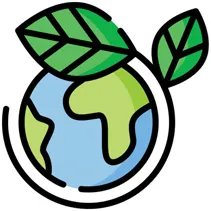
Teaching Climate Change for Grades 6–12
Empowering Science Teachers to Take on the Climate Crisis Through NGSS
Kelley Le
- 200 Seiten
- English
- ePUB (handyfreundlich)
- Über iOS und Android verfügbar
Teaching Climate Change for Grades 6–12
Empowering Science Teachers to Take on the Climate Crisis Through NGSS
Kelley Le
Über dieses Buch
Looking to tackle climate change and climate science in your classroom? This timely and insightful book supports and enables secondary science teachers to develop effective curricula ready to meet the Next Generation Science Standards (NGSS) by grounding their instruction on the climate crisis.
Nearly one-third of the secondary science standards relate to climate science, but teachers need design and implementation support to create empowering learning experiences centered around the climate crisis. Experienced science educator, instructional coach, and educational leader Dr. Kelley T. Le offers this support, providing an overview of the teaching shifts needed for NGSS and to support climate literacy for students via urgent topics in climate science and environmental justice – from the COVID-19 pandemic to global warming, rising sea temperatures, deforestation, and mass extinction. You'll also learn how to engage the complexity of climate change by exploring social, racial, and environmental injustices stemming from the climate crisis that directly impact students.
By anchoring instruction around the climate crisis, Dr. Le offers guidance on how to empower students to be the agents of change needed in their own communities. A range of additional teacher resources are also available at www.empoweredscienceteachers.com.
Häufig gestellte Fragen
Information
Part 1
Looking Back to Move Forward


1
Reenvisioning Science Teaching
- You’re ready to think about your own pedagogical practices (ways of teaching) to determine where you are as we align to the NGSS.
- You’re ready to engage in a paradigm shift (ways of thinking) to transform your teaching practices.
A Story about Tradition

- Why are students trained to raise their hands to speak? What does that teach them?
- How has education changed (or not) in the last century?
- What have researchers uncovered about how students effectively learn science?
- Why is there a need for the NGSS?
- What are the differences between NGSS-aligned curriculum and NGSS-aligned teaching? How might a teacher have one, but not the other?
- What might it look like to co-construct meaningful science experiences with students?
- Who decides what and/or how content should be taught?
- Why is there an emphasis on the climate crisis now in the curriculum?
- Is there a need for culturally relevant or responsive teaching? How confident are you with this framework?
- Education was initially created with only one audience in mind prior to the 1960s. Has it (if at all) transformed since to support every student?
- Why might it be important for students to see themselves in my science lessons? How confident are you with what this means?
- When do you tend to equity or justice-centered instruction? Is that one of your priorities?

An Opportunity to Challenge Science Education
Hey, I have a great idea! Let’s put 1000 teenagers in a building and sort them into groups of 40. Have someone talk at them for 55–90 minutes about the atom. Then move them down the hall and have someone else talk at them or engage them in activities for exactly the same amount of time about math (or another other subject). Then move them down the hall and repeat this four more times in the same day. Let’s do this over and over again. Day after day. Month after month. Year after year, for centuries to come. Isn’t that a great idea?
